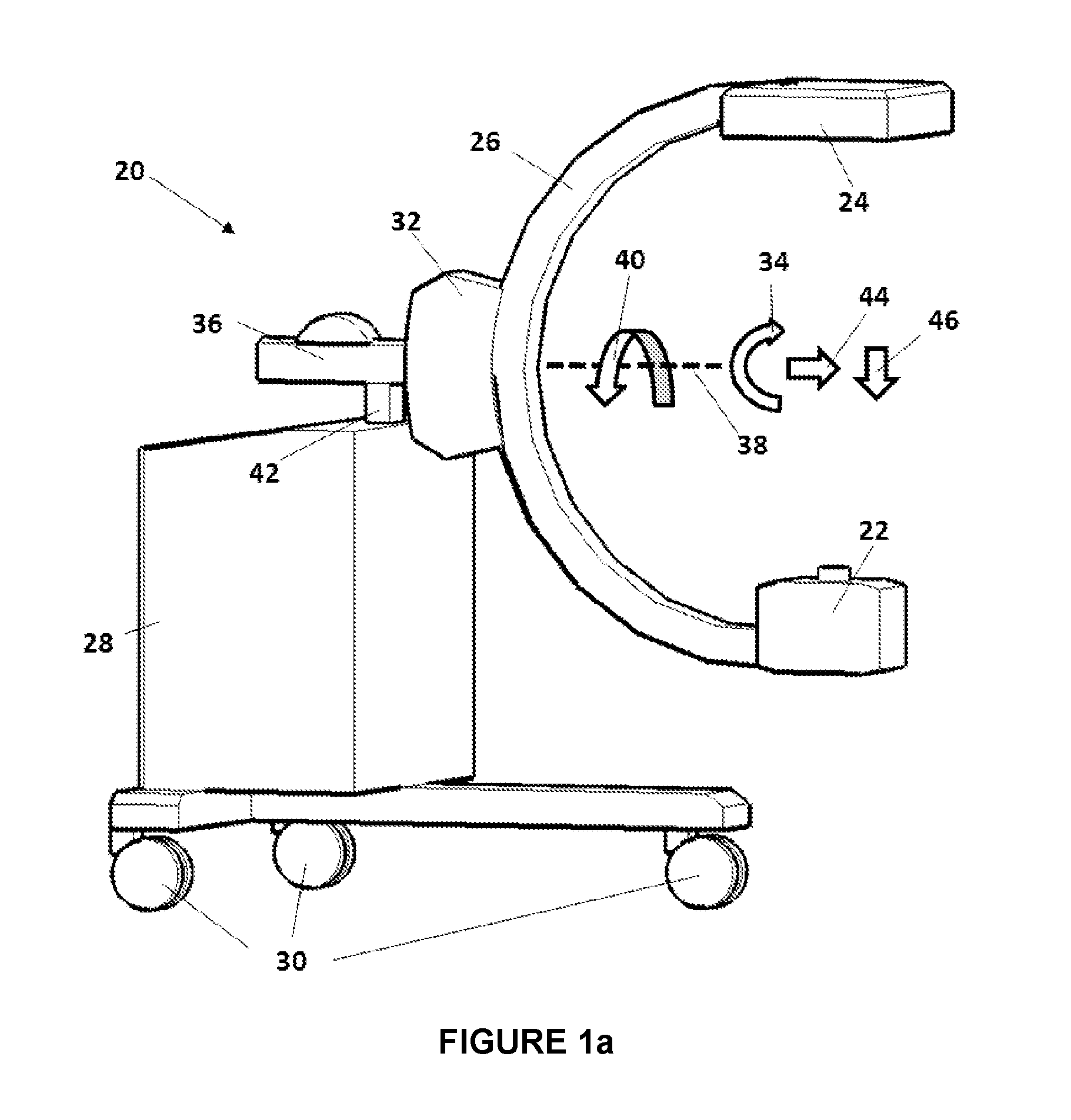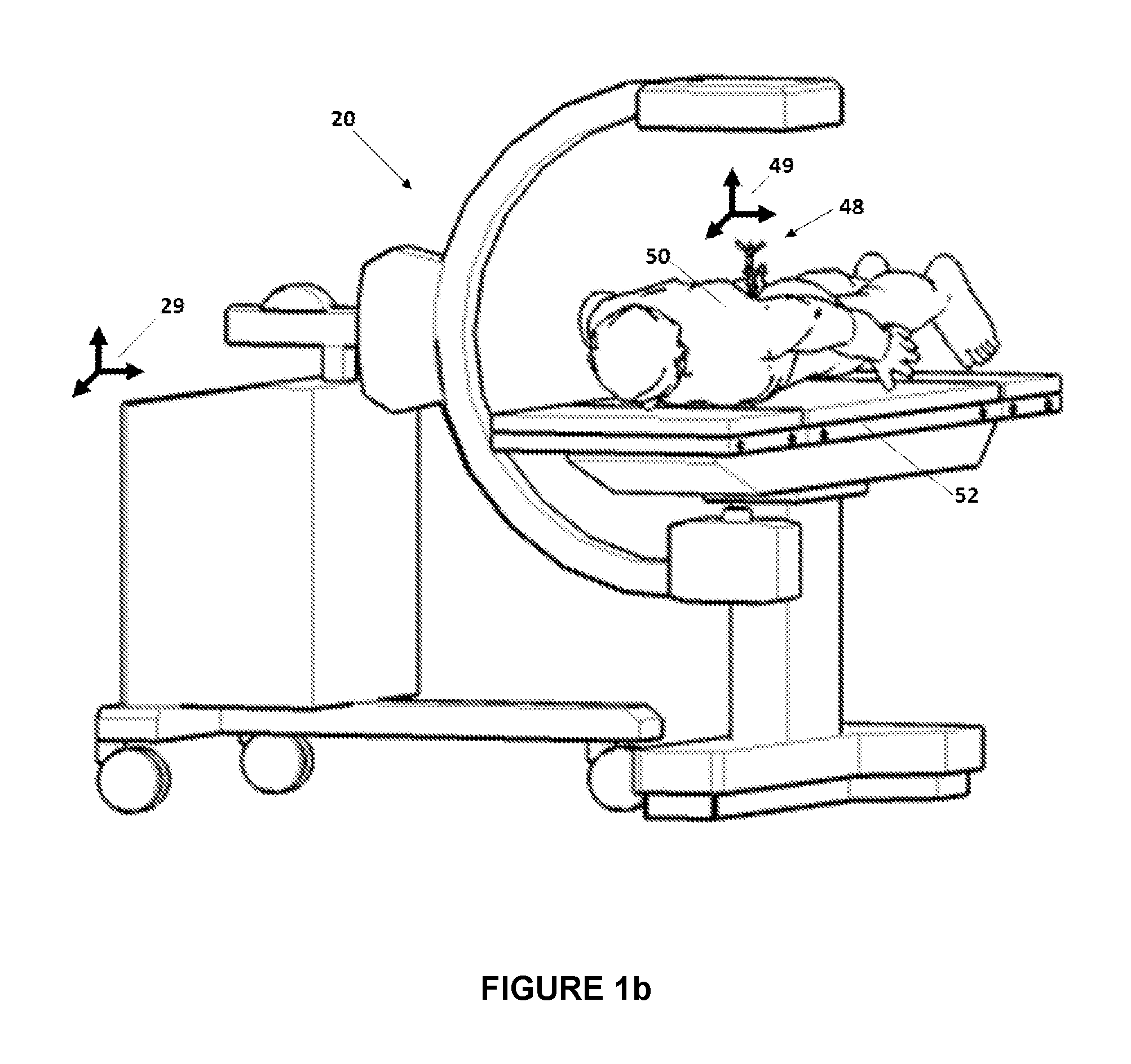Method for reconstructing a 3D image from 2d x-ray images
a 3d image and image technology, applied in the field of medical x-ray imaging systems, can solve the problems of device prone to mechanical distortion, device in general not usable inside the operating room, and mechanical rigidity insufficient to reproduce the desired projection geometry along a chosen path with sufficient accuracy, so as to improve the reconstruction quality of a 3d image
- Summary
- Abstract
- Description
- Claims
- Application Information
AI Technical Summary
Benefits of technology
Problems solved by technology
Method used
Image
Examples
Embodiment Construction
[0088]FIG. 1a depicts one embodiment of a mobile X-ray imaging system 20 comprising an X-ray source 22, an X-ray detector 24, a C-shaped arm 26, and a chassis 28 with attached rollers 30.
[0089]The X-ray source 22 is attached at one end of C-shaped arm 26 and the X-ray detector 24 is attached at the other end of C-shaped arm 26.
[0090]The X-ray source 22 and the detector 24 are mounted facing each other on opposing ends of the C-shaped arm 26 in a manner known in the art.
[0091]The 2D images captured by detector 24 can be transmitted to a graphic display not shown in the figure for direct visualization.
[0092]The 2D images may also be stored in a memory of a data processing unit of the X-ray imaging system.
[0093]Said data processing unit (not illustrated) typically comprises a processor that is adapted in particular to compute a 3D image from a set of acquired 2D images, to compute transformations between different coordinate systems, etc.
[0094]The data processing unit further comprises...
PUM
 Login to View More
Login to View More Abstract
Description
Claims
Application Information
 Login to View More
Login to View More - R&D
- Intellectual Property
- Life Sciences
- Materials
- Tech Scout
- Unparalleled Data Quality
- Higher Quality Content
- 60% Fewer Hallucinations
Browse by: Latest US Patents, China's latest patents, Technical Efficacy Thesaurus, Application Domain, Technology Topic, Popular Technical Reports.
© 2025 PatSnap. All rights reserved.Legal|Privacy policy|Modern Slavery Act Transparency Statement|Sitemap|About US| Contact US: help@patsnap.com



